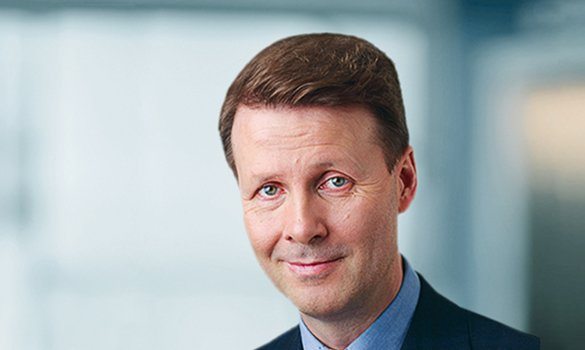5G key to Nokia’s vertical, enterprise IoT market strategy
RCR Wireless News recently had the opportunity to visit with Nokia Chairman, Risto Siilasmaa. This post is the second in a series of articles from the interview held at Nokia headquarters in Helsinki, Finland. Previous posts include:
-
Transformation is in our DNA – Risto Siilasmaa, Nokia chairman
-
Nokia transformation timeline under Chairman Risto Siilasmaa
Jeff Mucci: What does a programmable world mean to the carrier and enterprise markets?
Risto Siilasmaa: One of the big shifts happening now is the expansion of exponentially improving technology into new industries. While this technology evolution continues to take the ICT industry by surprise, embedding IoT into business processes of more traditional businesses will create significant opportunities for disruption and those players will be less well equipped to understand all the implications.
Connecting everything in all industries means that a lot of companies that are not used to creating digital products will have to start learning fast what that means. We have seen time after time how difficult it is for the best software companies to create secure products. It will be almost impossible for companies that don’t have the digital DNA.
For the enterprise market, the programmable world is basically about the digitization of all businesses. For the carrier market, it is what they have done for a very long time. They provide the digital nervous system underlying the digitization of all high-level processes. And that, of course, is the challenge for us, for the operators, as well. Many operators have been fighting very hard not to just be the underlying nervous system but to be something more, and this is the old battle with the OTTs (Over-the-Top players) that is still going on. Different operators are taking different paths of competing with OTT players. And that will continue.
I won’t comment further on what our customers should do, because that’s their choice and their decision. We try to provide them with opportunities to create new value-added businesses on top of the basic infrastructure and provide them with the ability to scale in the sense that any single operator is always a regional player. With the OTTs, they always compete with global players. And it’s really hard in any business to win if you are a regional player and you have global competition, because the economies of scale of the global players, in the end, always sort of tilt the scale. And Nokia, as a global player, can bring global economies of scale to our operator customers, and that’s, of course, what we try to do.
The programmable world is a $100 trillion opportunity. That’s the number that the World Economic Forum has put forward. I think it’s a very, very high number, but it really doesn’t matter whether the right number is $50 trillion or $100 trillion. It is a transformative opportunity for the whole industry.
Jeff Mucci: Where do you think enterprises are in the digitization of their sectors? Are they in the first inning, fifth inning, ninth inning?
Risto Siilasmaa: That really varies and I think there are two big challenges. The first is that not everybody thinks about digitization in a similar way. For the IT industry and parts of the more traditional businesses that have been disrupted by new ways of doing the old things, the driving force really of digitization is the exponential growth of computational power; for example, with Moore’s Law and Metcalfe’s Law. And many traditional industries are not used to dealing with exponential development capabilities. They are used to a much slower pace.
And now with IoT, we are bringing that exponential element to all areas of business, which means that there will be disruption opportunities in more and more of the traditional business areas, and that leads into the second big challenge of security and protecting all of one’s IT assets. We hear on almost a daily basis of either confirmed IT security breaches or at least how big the threat is. And, people who don’t really understand the technology fully will be digitizing processes in various fields, and they will not be able to do that in a secure fashion.
So, that’s also an opportunity for companies such as ours, where we can provide them with at least the communication plane in a secure fashion and then help them on adding security in higher-level processes, as well, in specific industries. So, it is a huge transition, and it’s a huge disruption opportunity for newcomers. And it’s a huge challenge for existing players.
Jeff Mucci: Where do you see 5G fitting into that transformation effort?
Risto Siilasmaa: Well, one way to look at 5G is that it’s sort of a programmable digital communication ability, because it’s such a versatile toolbox of different ways of communicating compared to the old generations. You can really define certain SLAs to a certain customer, and the network will just implement that for that customer. And the SLAs for various use cases will be wildly different. They will also extend all the way to end devices. The network will need to have a lot of sensors out there with batteries that will last at least 10 years, and that will not be possible if the network doesn’t support that.
So, there is a very significant opportunity and change in using 5G technology to enable the programmability

